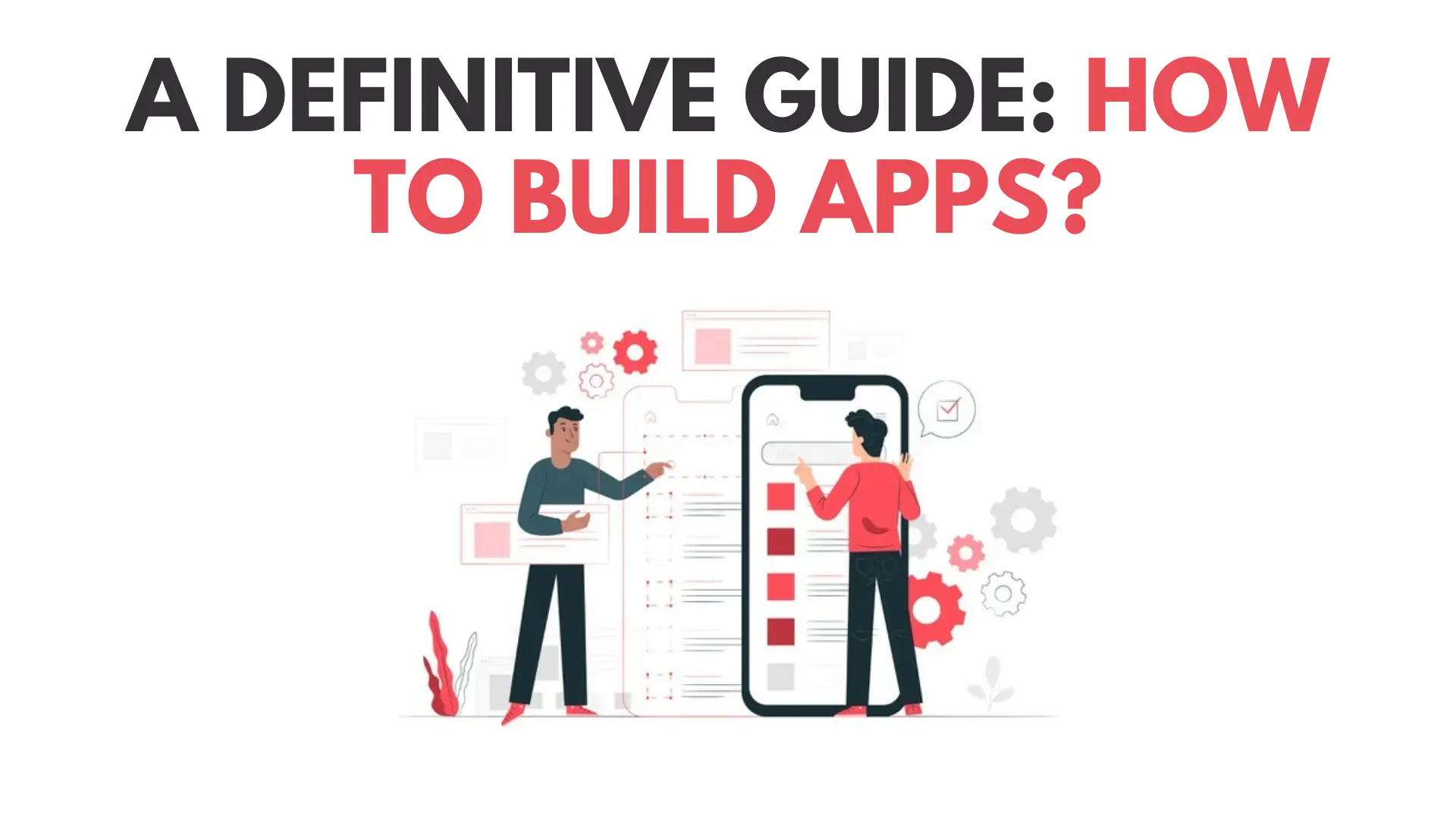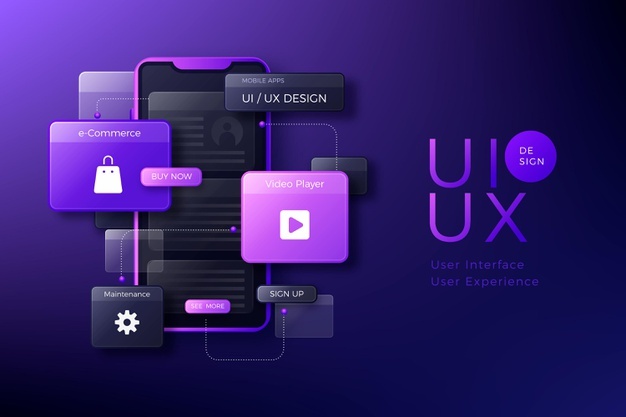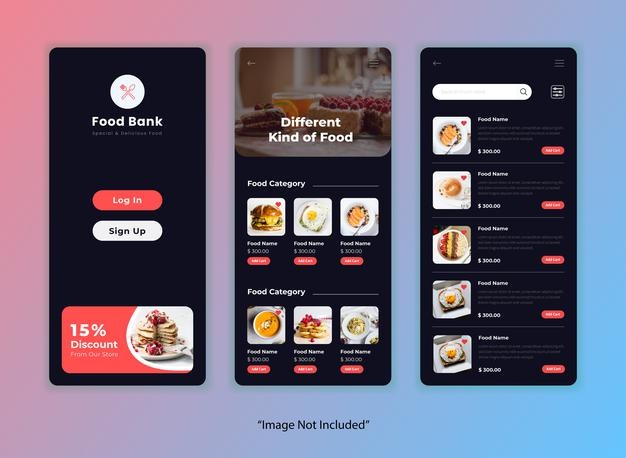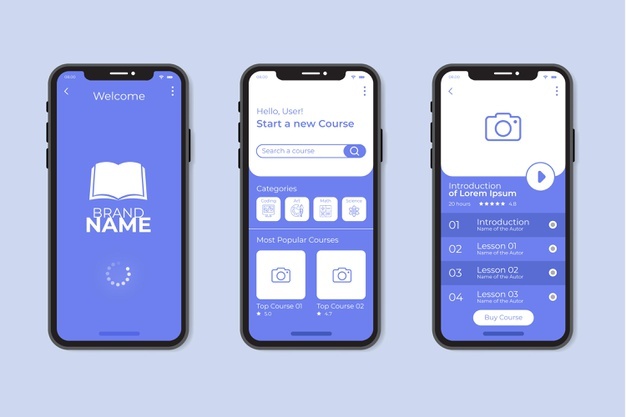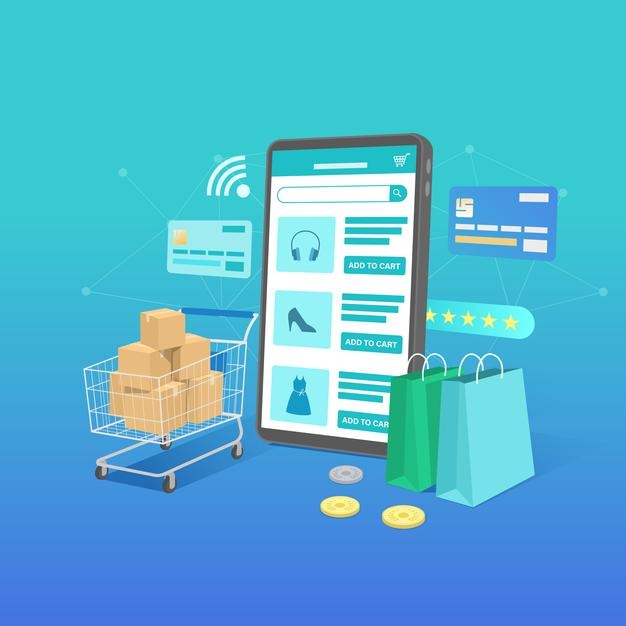“How to build apps for business?” It’s a question that many entrepreneurs are asking themselves these days. Mobile applications can be the catalyst for your business and help you increase potential, engage customers in new ways, and boost sales. They may become one of the best independent sources of income for many companies! According to Statista, global revenues from mobile app development are expected to exceed $935 billion by 2023.
Mobile app development can seem daunting. With its complexities, but it doesn’t have to be. With research and planning, you’ll find success in no time at all! This post will discuss different software app development approaches and critical features for popular niches that builders should consider when developing their apps or games on top platforms such as Apple Store or Google Play Store.
But before that, you need to know…..
Let’s Figure Out the General Requirements
UI/UX designers spend hours creating attractive and user-friendly business apps. Wireframes, mockups, and prototypes are their areas of expertise. They take care not only of the design but also fonts for every element that needs to be done to make sure it suits your brand correctly. Since the more complex your app’s features, the longer it takes for a designer to build layouts or draw every small component, wireframes are created early on to ensure that everything can be easily understood by all team members who may need them later.
UI/UX design is essential to creating a great user experience. That’s why it’s crucial for button styles and text sizes, among other things like background colors or fonts choices (think about readability), to be considered during app development phases. Suppose you need some help finding good designers in particular industries. In that case, Squash Apps might be worth checking out as hundreds of projects are done for different companies around the world with plenty more new technologies on regular use.
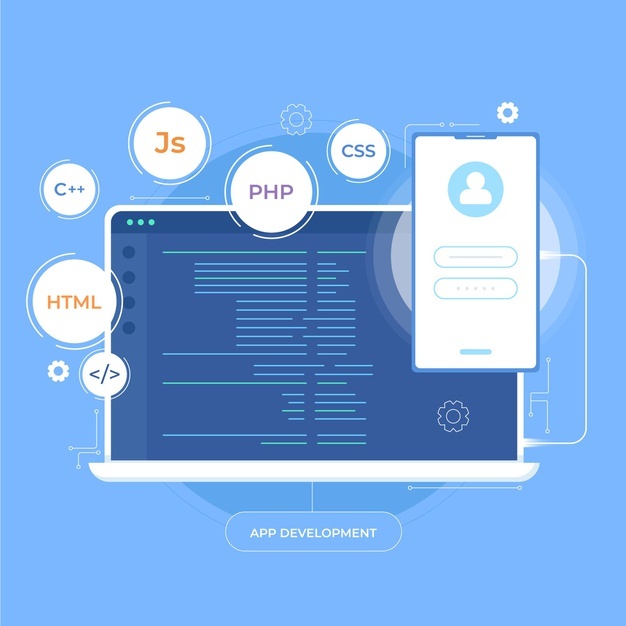
 Telemedicine apps are a time-efficient and convenient way to improve patient care. With remote monitoring by physicians, prescription management can be done on-site, saving money in costly ED visits or hospitalizations when preventative measures would suffice.
The convenience also extends beyond observation for treatment; this technology allows providers access at any given moment during your appointment, so they’re able to keep an eye out over every aspect of how you’re doing – from checking health conditions through managing prescriptions as needed, supervising therapy sessions remotely if necessary –allowing them better decision making while giving back some measure.
Creating a Telemedicine app for your business can be easy with this list of features:
Telemedicine apps are a time-efficient and convenient way to improve patient care. With remote monitoring by physicians, prescription management can be done on-site, saving money in costly ED visits or hospitalizations when preventative measures would suffice.
The convenience also extends beyond observation for treatment; this technology allows providers access at any given moment during your appointment, so they’re able to keep an eye out over every aspect of how you’re doing – from checking health conditions through managing prescriptions as needed, supervising therapy sessions remotely if necessary –allowing them better decision making while giving back some measure.
Creating a Telemedicine app for your business can be easy with this list of features:
Once Again, the pressing question might be, “How do I build apps for my business?”
From figuring out software development approaches and highly demanded niches to creating an app for you or one of your business’s needs, we’ve gone through everything that needs consideration. But the real question for every business owner is, “How to create an app for my business?”
Basically, every business owner has these three options:
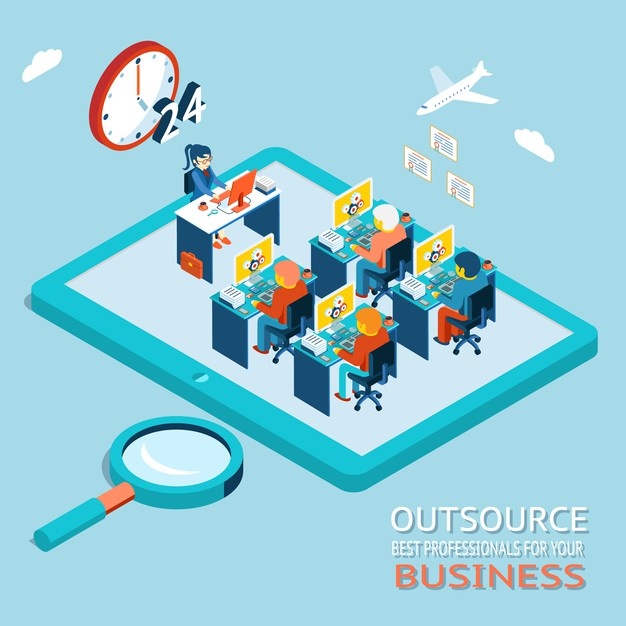 Outsourcing software development is a brilliant way to get your app in the hands of as many people as possible, especially when you need it for business. For entrepreneurs who want a low price with all expenses taken care of – this makes outsourcing perfect. Companies with in-house teams are usually much more expensive. You’ll need to pay for office space and all of the hardware, which can be costly if you don’t have many employees or just one person on staff who needs everything right away!
It’s easy to get caught up in the heat of an auction, but you should always do your research beforehand. The highest-priced provider might not be worth it if their service doesn’t meet your needs or standards, and there’s no way for them to falsify reviews since they’re all verified through third-party websites like Clutch & Goodfirms, which provide the customer experience from previous customers about companies they’ve worked with.
Now, how much would you spend to shape your steam app in shape? Developers from various regions cost the process at different rates. The prices in these tech hubs can vary depending on the area.
Outsourcing software development is a brilliant way to get your app in the hands of as many people as possible, especially when you need it for business. For entrepreneurs who want a low price with all expenses taken care of – this makes outsourcing perfect. Companies with in-house teams are usually much more expensive. You’ll need to pay for office space and all of the hardware, which can be costly if you don’t have many employees or just one person on staff who needs everything right away!
It’s easy to get caught up in the heat of an auction, but you should always do your research beforehand. The highest-priced provider might not be worth it if their service doesn’t meet your needs or standards, and there’s no way for them to falsify reviews since they’re all verified through third-party websites like Clutch & Goodfirms, which provide the customer experience from previous customers about companies they’ve worked with.
Now, how much would you spend to shape your steam app in shape? Developers from various regions cost the process at different rates. The prices in these tech hubs can vary depending on the area.
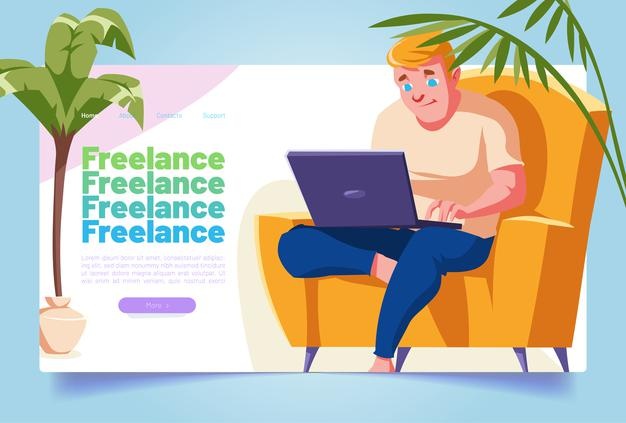 Finally, we’ve reached the best option for you. If your budget is tight and you need software that will do what it says in a cost-effective way, then these freelance developers might be just right! Freelance developers can be a difficult breed to deal with. They may take the advance payment and contact you again in several weeks, or they might just disappear altogether!
Freelancers are generally not as professional because no app project manager is coordinating their work – but this also leaves contractors free from any type of accountability, which could cause delays on your end, too if something goes wrong at some point during the mobile app development process without them being present for clarification questions like “When will these changes go live?”.
Understandably, many freelancers do not bother with quality assessment. As a result, you can end up getting a product full of bugs and vulnerabilities, which will then take extra work to fix or pay the same person even with additional costs for their time spent fixing them than what was initially agreed upon in terms of payment per task completed.
Finally, we’ve reached the best option for you. If your budget is tight and you need software that will do what it says in a cost-effective way, then these freelance developers might be just right! Freelance developers can be a difficult breed to deal with. They may take the advance payment and contact you again in several weeks, or they might just disappear altogether!
Freelancers are generally not as professional because no app project manager is coordinating their work – but this also leaves contractors free from any type of accountability, which could cause delays on your end, too if something goes wrong at some point during the mobile app development process without them being present for clarification questions like “When will these changes go live?”.
Understandably, many freelancers do not bother with quality assessment. As a result, you can end up getting a product full of bugs and vulnerabilities, which will then take extra work to fix or pay the same person even with additional costs for their time spent fixing them than what was initially agreed upon in terms of payment per task completed.
Why should you create an App for Business?
Mobile apps are more than just consumer tools. They have become integral in both personal and business life, with many people using them every day for everything from checking email to managing tasks like grocery lists. The companies that invest time into creating their own branded mobile app and orchestrating the proper notifications across both the app stores Android and Apple platforms stand apart because they provide customers not only what’s on your phone but also how you interact with it – whether by viewing content or taking action within an application. Did you know that an app for your business can be a massive return on investment? How, exactly? Well, if you have an app for your own business, two vital things will definitely happen:- You can engage with your customers more deeply; they feel like a part of the process.
- You can deliver better results and transformation because we’ll get to know their problems before coming up with solutions for them!
Let’s Figure Out the General Requirements
 Software development isn’t only about programming! It’s a complex process that requires the labor of various specialists. Business analysts, UI/UX designers, Quality Assurance engineers, programmers, and project managers all come together to plan out your app for you – after initial contact with one or more experts in each field during planning stages; these individuals make rough estimates as well as negotiate on what type(s) of work will be done at hand by asking questions like “What do we need? How much does it cost per hour?”
To build a strong foundation, it is essential to understand each stage of the mobile app development process.
Software development isn’t only about programming! It’s a complex process that requires the labor of various specialists. Business analysts, UI/UX designers, Quality Assurance engineers, programmers, and project managers all come together to plan out your app for you – after initial contact with one or more experts in each field during planning stages; these individuals make rough estimates as well as negotiate on what type(s) of work will be done at hand by asking questions like “What do we need? How much does it cost per hour?”
To build a strong foundation, it is essential to understand each stage of the mobile app development process.
Planning:
Your project is like a blank canvas waiting to be filled. During the planning phase, you first collaborate with business analysts, figuring out all requirements for your software app development company’s product ahead of time, which they then use as a roadmap for creating the business apps or service you’ve been dreaming about!
The app design process starts with business strategy, which is the responsibility of a specialized analyst. They write specifications for engineers based on what you want them to create, and then it’s up to designers who do all that pesky work like designing UI elements in Wireframes! After approval from management (and maybe even some tester input), and having clear business requirements, and the proposed app is the perfect business solution, then the engineers will go straight into building out your dream product.
Design:
UI/UX designers spend hours creating attractive and user-friendly business apps. Wireframes, mockups, and prototypes are their areas of expertise. They take care not only of the design but also fonts for every element that needs to be done to make sure it suits your brand correctly. Since the more complex your app’s features, the longer it takes for a designer to build layouts or draw every small component, wireframes are created early on to ensure that everything can be easily understood by all team members who may need them later.
UI/UX design is essential to creating a great user experience. That’s why it’s crucial for button styles and text sizes, among other things like background colors or fonts choices (think about readability), to be considered during app development phases. Suppose you need some help finding good designers in particular industries. In that case, Squash Apps might be worth checking out as hundreds of projects are done for different companies around the world with plenty more new technologies on regular use.
Software Development:
Software engineers are the heart of any app. They create and maintain all business logic for your application to work effectively, efficiently – even more so when developing an Android food delivery program like UberEats! To do this adequately, they need a deep understanding of how different technologies function within their niche and what platforms you’ll use, such as Kotlin or Java, to track app users’ location data.Quality Assurance:
QA engineers have a critical task: test the project, document any bugs, and return them for fixing. In this way, they can ensure that your app is safe from vulnerabilities that may lead to inconveniences or problems with data safety in case an error happens during the development process, of course! Before contacting a development team, you have to figure out the requirements for your software. This includes things like mobile platform differences, cross-platform technologies, and frameworks that have been used in different industries for decades! It’s vital before contacting our team of developers; you figure out which approach will be best suited to your needs. Let’s take a quick glance at the most common and basic software development approaches.
Native Development
If you really want to create an app for your business with a native approach, then the answer is simple. You need two different versions of that same software – one written in Java or Kotlin, which can be used on Android devices (and they’re both designed specifically for this platform), and another built from Objective-C, and Swift coding languages focused more heavily around Apple’s iOS operating system design principles. Native development lets engineers use the power of their devices to its fullest. With native code, designers and developers can split heavy tasks like photo/video processing or GPS navigation between different system resources for smooth performance across all device types. Native development is an excellent option for engineers who want their applications to be as performance-efficient and scalable now or in the future. The process of making an app for your business with native techniques usually takes much longer than using the web and hybrid apps. To create a successful application, you’ll need at least two developers willing to work on iOS codebases and Android ones – which can cost quite some money!Hybrid Apps & Cross-Platform Apps
Cross-platform apps are a great way to make your business app in the shortest time. If you need help with developing an app, here’s what cross-platforms have got going for them! Cross-platform apps are a reasonable choice for those looking to create an app with the same look and feel on every platform. They require native code, but this can be written in various ways such as Xamarin, PhoneGap, or React Native with relative ease thanks to their respective frameworks – all platforms will see performance loss when transitioning from one language into another since they have different mechanisms at work behind them; even more so if both parts were initially created separately! Flutter is the perfect framework for creating a smooth 60 FPS app. It doesn’t require any external libraries or plugins and its programming language. Dart isn’t too complex either! With Flutter, you can have custom-designed elements like layouts without worrying about performance issues on different devices – all thanks to “everything being widget-based.” One of the most famous design trends in apps is hybrid. Hybrid applications have a web view and can be installed like native ones. Still, they operate on both platforms, which reduces development time by half compared to traditional Native app designs. Hybrid development is a bit of an oddity among the different types of mobile app development. These applications have fewer design options. They may perform poorly or lack some custom features compared to others, making them less desirable in this day and age when more people want simplicity over complexity from their software projects.So, What should you choose finally?
When it comes to app development, there are a lot of options. If you need an easy product launch and aren’t too concerned with the cost, cross-platform or hybrid apps might be best for your needs as they typically have lower maintenance costs than native ones do. Native apps are the best option for complex features and custom designs. You are creating an app for your business that fulfills all of the expectations you have? We’ve created a comparative table to help!| Attributes | Cross-Platform | Hybrid | Native |
| Performance | Low performance due to the conversion from one API to another | With complex features, and web-view has terrible performance | The best performance with well-built logic |
| Device’s Features | Can’t get access to a few native features as they have indirect communication with the device’s hardware | Have access to every feature of the device | |
| Code Reusability | All the codes can be used for both platforms | Codes can be used for a single platform | |
| User Interface | Customization is easy with Flutter in many ways | Only suits for displaying content since web-view has poor navigation | The designer’s ideas may limit the UI and navigation |
| Updates | The updated price has upgrades for both platforms because of a single codebase | Every platform separately has calculated the updated price | |
| Development Cost | Both the hybrid and cross-platform apps are twice as cheap as native development. | It has the highest cost to develop an app. | |
Hoping into Requirements for Industry-specific Apps
Successful apps are not just pretty faces and clever marketing copy; they come from a detailed user research strategy. The app owners are responsible for conducting market analysis to determine which features will make your app successful in the long run and Risk Assessment – making sure you have considered all possible risks before getting started. Even though business analysts can be a massive help with the tech stack and MVP features, it is vital to prepare global requirements independently. We’ve made a list of popular niches and possible app features for you to think about, but it’s ultimately up in the air what will work best on your end!1. Food Delivery App
If you’re a restaurant owner, then the food delivery service can help strengthen customer relationships and boost sales. Let’s have a look at what essential features are necessary for your app to be successful! The best way to deliver food is with an app. This also means that you need a good map integration. Your customers can easily find your location with the map integration. You just have to enter their address, and you will see all of our coverage areas on a Google Map! A simple text field is also an option if building an app for business at low costs. The user will get a text message with the address. However, if you’re ready to spend an extra buck or two more for geolocation, then the transmission of the courier and the user will be shared with each other in real-time. Don’t forget about the shopping cart, menu, and checkout! Your customers also need to specify their order details, like removing onion from a burger to get precisely what they want without any hassle or delay on delivery – which takes time and money. Still, you don’t have to deal with cash anymore!Approximate Feature list:
- Registration/Authorization
- Menu
- Geolocation
- Meal details
- Shopping cart
- Text chat
- Checkout
Main Technologies for Food Delivery App:
| Programming Languages | Integrations |
| Kotlin (android) | Twilio |
| Swift (iOS) | Socket.io |
| Amazon SES | |
| Back-end Development | FCM |
| MySQL | Facebook SDK |
| Sequelize | Google Maps Platform |
| Node JS | Google Sign in |
| Elastic Search | Braintree |
| PayPal |
2. E-Learning
It’s no surprise that the world is embracing remote education. It has been proven to be an efficient, effective form of teaching for years now, with companies like Coursera and Udemy partnering up top-tier universities as well experienced private tutors who offer maximum opportunities in lessons tailored just for you! Efforts are paying off – their billion-dollar company grew to 64 million learners robust.Approximate Feature list:
- Authentication and user profile
- Admin panel
- Filtering system
- Dashboard
- Course page
- Notifications and reminders
- Course adding page (for tutors)
- Payment systems
Common Technologies for E-Learning App:
| Programming Languages | Integrations |
| Kotlin (android) | Amazon SNS |
| Swift (iOS) | Swagger |
| Back-end Development | Amazon SES |
| OkHttp 3 | FCM |
| MySQL | Elastic Emails |
| Alamofire | Amazon S3 |
| Node JS | PayPal |
| Elastic Search | Braintree |
| Express 4 |
3. Streaming App
In the ever-changing world of entertainment, streaming has become a popular form for many. Almost 70% of Americans between 18 and 34 have subscribed to at least one video streaming service, according to Statista. Live streamers can also reach an international audience thanks in part because they can get creative with their content by using different platforms like Instagram Stories or Snapchat lenses! To build a business app for streaming, you’ll need to integrate ads and add paid subscriptions that provide specific benefits. You can start with this feature list:- User registration
- Search
- Online streaming
- Comments to broadcasts
- Creating a personal user profile
- Server-side (ability to convert stream)
Leading Technologies for Streaming App:
| Programming Languages | Integrations |
| Kotlin (android) | Cloudflare |
| Swift (iOS) | Stripe |
| Java (android) | Amazon S3 |
| Back-end Development | DaCast |
| RTMP | FCM |
| MySQL | Wowza |
| WebRTC | AWS Simple Queue System |
| Amazon EC2 | |
| Oracle | |
| Node JS |
4. E-Commerce
Online retail is a highly customizable niche in terms of design and features. To create an MVP app for your business, you need to develop these key features:- Registration/Authorization
- Homepage
- Catalog
- Product page
- Shopping cart
- Payment gateway
- Technical support
Main Technologies for E-commerce App:
| Frontend | Backend | Integrations |
| Angular Universal | Node JS | Amazon SES |
| Angular JS | MySQL | Amazon S3 |
| TypeScript | Stripe | |
| UI Library | PostgreSQL | PayPal |
| Angular material | Elastic Search | FCM |
| Twitter Bootstrap | Redis | Adyen |
| Semantic UI | BullMQ | Gmail |
| Sequalize | Twitter API | |
5. Healthcare App
 Telemedicine apps are a time-efficient and convenient way to improve patient care. With remote monitoring by physicians, prescription management can be done on-site, saving money in costly ED visits or hospitalizations when preventative measures would suffice.
The convenience also extends beyond observation for treatment; this technology allows providers access at any given moment during your appointment, so they’re able to keep an eye out over every aspect of how you’re doing – from checking health conditions through managing prescriptions as needed, supervising therapy sessions remotely if necessary –allowing them better decision making while giving back some measure.
Creating a Telemedicine app for your business can be easy with this list of features:
Telemedicine apps are a time-efficient and convenient way to improve patient care. With remote monitoring by physicians, prescription management can be done on-site, saving money in costly ED visits or hospitalizations when preventative measures would suffice.
The convenience also extends beyond observation for treatment; this technology allows providers access at any given moment during your appointment, so they’re able to keep an eye out over every aspect of how you’re doing – from checking health conditions through managing prescriptions as needed, supervising therapy sessions remotely if necessary –allowing them better decision making while giving back some measure.
Creating a Telemedicine app for your business can be easy with this list of features:
- Registration
- Search for a physician
- Keeping and viewing EHRs
- Managing appointments
- Notifications
- Text chat
- Video conferencing
- Review system
- Payment system
Leading Technologies for Healthcare App:
| Programming Languages | Integrations |
| Kotlin (android) | Elastic Emails |
| Swift (iOS) | Stripe |
| Java (android) | Amazon S3 |
| Back-end Development | Amazon EC2 |
| RTMP | FCM |
| MySQL | Google Maps Platform |
| WebRTC | |
| Socket.io | |
| Elastic Search | |
| Node JS | |
| Twilio |
- Software Development (Outsourcing)
- In-house Development
- Freelance developers
Outsourcing Software Development
 Outsourcing software development is a brilliant way to get your app in the hands of as many people as possible, especially when you need it for business. For entrepreneurs who want a low price with all expenses taken care of – this makes outsourcing perfect. Companies with in-house teams are usually much more expensive. You’ll need to pay for office space and all of the hardware, which can be costly if you don’t have many employees or just one person on staff who needs everything right away!
It’s easy to get caught up in the heat of an auction, but you should always do your research beforehand. The highest-priced provider might not be worth it if their service doesn’t meet your needs or standards, and there’s no way for them to falsify reviews since they’re all verified through third-party websites like Clutch & Goodfirms, which provide the customer experience from previous customers about companies they’ve worked with.
Now, how much would you spend to shape your steam app in shape? Developers from various regions cost the process at different rates. The prices in these tech hubs can vary depending on the area.
Outsourcing software development is a brilliant way to get your app in the hands of as many people as possible, especially when you need it for business. For entrepreneurs who want a low price with all expenses taken care of – this makes outsourcing perfect. Companies with in-house teams are usually much more expensive. You’ll need to pay for office space and all of the hardware, which can be costly if you don’t have many employees or just one person on staff who needs everything right away!
It’s easy to get caught up in the heat of an auction, but you should always do your research beforehand. The highest-priced provider might not be worth it if their service doesn’t meet your needs or standards, and there’s no way for them to falsify reviews since they’re all verified through third-party websites like Clutch & Goodfirms, which provide the customer experience from previous customers about companies they’ve worked with.
Now, how much would you spend to shape your steam app in shape? Developers from various regions cost the process at different rates. The prices in these tech hubs can vary depending on the area.
| Region | Rates in $ per hour |
| Asia | $20-$40/hour |
| South America | $25-$49/hour |
| Eastern Europe | $25-$40/hour |
| Western Europe | $50-$149/hour |
| Oceania | $100-$150/hour |
| North America | $150-$200/hour |
In-House Development:
The idea of an in-house team is to have a group of developers that work full time at your company’s office. This option can be successful for an app development company with large budgets and can control what their employees are doing tightly. Still, there isn’t always room on this scale when you’re operating under tight deadlines or other constraints to make something happen quickly enough without hiring outside help. You’re always aware of the stumbling blocks, app project conditions, and obstacles that appear while building an app for your business. However, it is crucial to maintain a stable team because no one knows the codebase better than the original developers who created this masterpiece in its entirety. When you’re a startup, it can be hard to find the budget for your in-house team. According to Glassdoor, American mobile app developers earn $80K per year on average while owning their own company with three other employees (one designer & QA engineer). The four of them will cost around 400 thousand dollars every single year! Add all these expenses up office rent, purchase hardware-software compensations plus anything else that might come along – like health benefits or holiday payouts—and now we’re talking real money!.Freelance Developers:
 Finally, we’ve reached the best option for you. If your budget is tight and you need software that will do what it says in a cost-effective way, then these freelance developers might be just right! Freelance developers can be a difficult breed to deal with. They may take the advance payment and contact you again in several weeks, or they might just disappear altogether!
Freelancers are generally not as professional because no app project manager is coordinating their work – but this also leaves contractors free from any type of accountability, which could cause delays on your end, too if something goes wrong at some point during the mobile app development process without them being present for clarification questions like “When will these changes go live?”.
Understandably, many freelancers do not bother with quality assessment. As a result, you can end up getting a product full of bugs and vulnerabilities, which will then take extra work to fix or pay the same person even with additional costs for their time spent fixing them than what was initially agreed upon in terms of payment per task completed.
Finally, we’ve reached the best option for you. If your budget is tight and you need software that will do what it says in a cost-effective way, then these freelance developers might be just right! Freelance developers can be a difficult breed to deal with. They may take the advance payment and contact you again in several weeks, or they might just disappear altogether!
Freelancers are generally not as professional because no app project manager is coordinating their work – but this also leaves contractors free from any type of accountability, which could cause delays on your end, too if something goes wrong at some point during the mobile app development process without them being present for clarification questions like “When will these changes go live?”.
Understandably, many freelancers do not bother with quality assessment. As a result, you can end up getting a product full of bugs and vulnerabilities, which will then take extra work to fix or pay the same person even with additional costs for their time spent fixing them than what was initially agreed upon in terms of payment per task completed.
Squash Apps Expertise:
At Squash Apps, as an app development agency, we have an app for every need. Whether you’re looking to create or launch a new product line with distribution channels in mind, want your organization’s information system overhauled so employees can be more productive and efficient at work? If that sounds like something up our alley, then give us a call today!.Frequently Asked Questions:
- Can I build an app for my business?
- How much does it cost to build an app for my business?
| Region | Rates in $ per hour |
| Asia | $20-$40/hour |
| South America | $25-$49/hour |
| Eastern Europe | $25-$40/hour |
| Western Europe | $50-$149/hour |
| Oceania | $100-$150/hour |
| North America | $150-$200/hour |
- What is the best platform to build apps?
Oviya is an experienced technical writer at Squash Apps. She has hailed from Coimbatore, who is a Literature graduate & fond of penning words that fall right into the contexts! She is a Numismatist, Potterwala, Blogger & has an interest in stories that make a difference in the world! Find me on Linked In!

